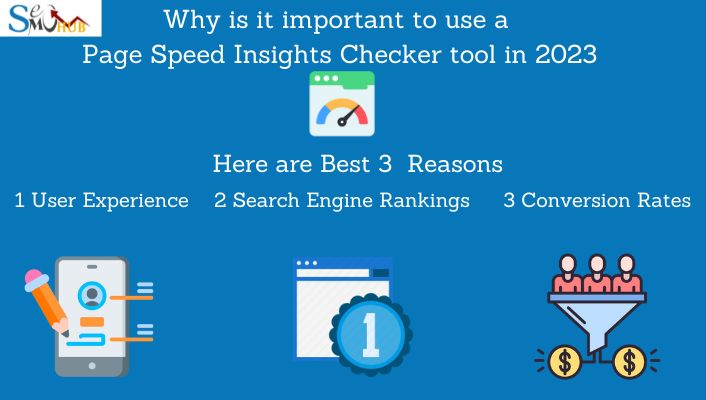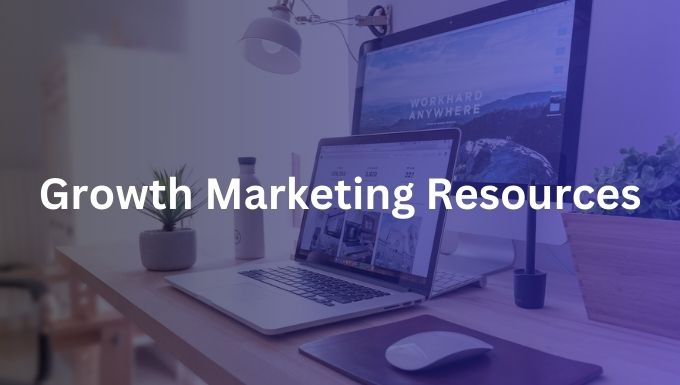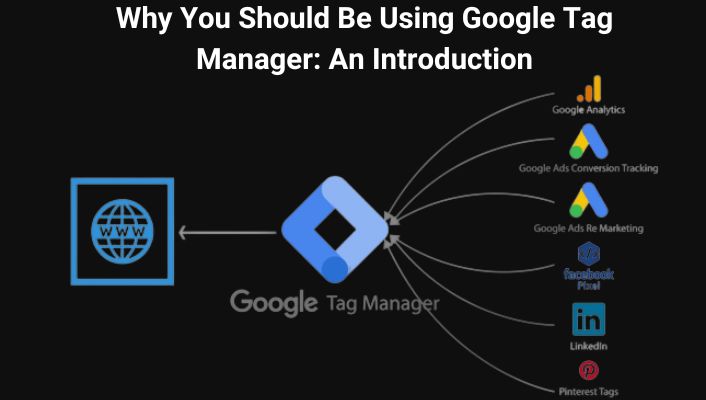Artificial Intelligence (AI) has become a cornerstone of innovation in the digital age, driving change across various sectors. From artists to engineers, the need for efficient, accessible tools has never been more critical. The “Essential AI Toolbox” is a curated list of free AI tools that promise to unleash your creative potential. This comprehensive guide will walk you through various applications, from simple task automation to complex problem-solving algorithms, ensuring you’re equipped for any creative challenge.
Outline
1. Introduction to AI Tools
· Defining AI Tools
· Importance in Modern Creativity
2. AI Tools for Writers
· Text Editors and Enhancers
· Plagiarism Checkers
· Content Idea Generators
3. AI Tools for Artists and Designers
· Image Generators
· Pattern and Design Software
· Digital Art Enhancements
4. AI Tools for Developers
· Code Assistants
· Debugging and Optimization Tools
· Open Source Libraries
5. AI Tools for Musicians
· Sound Libraries
· Composition and Arrangement Tools
· Audio Editing Software
6. AI Tools for Entrepreneurs and Business Owners
· Market Analysis Tools
· Customer Service Bots
· Financial Forecasting Tools
7. AI Tools for Educators and Students
· Learning Management Systems
· Interactive Learning Tools
· Research and Reference Management
8. AI in Everyday Life
· Personal Assistants
· Smart Home Devices
· Health and Fitness Trackers
9. Understanding the Ethics of AI Tools
· Bias and Fairness
· Privacy Concerns
· Sustainable AI Practices
10. Future Trends in AI Tools
· Predictions and Innovations
· Industry Impact
· Skills of the Future
11. Choosing the Right AI Tools
· Assessing Needs and Capabilities
· Comparing Features and Costs
· User Reviews and Recommendations
12. Integrating AI Tools into Workflow
· Step-by-Step Guide
· Best Practices
· Case Studies
13. Overcoming Challenges with AI Tools
· Technical Difficulties
· Adapting to New Systems
· Finding Support and Resources
14. AI Tools and Community Engagement
· Forums and Online Communities
· Collaborative Projects
· Sharing and Feedback Mechanisms
15. Personalization and AI Tools
· Customization Features
· Learning User Preferences
· Enhancing User Experience
16. Security Measures in AI Tools
· Protecting Data
· Avoiding Malware and Scams
· Secure Sharing and Collaboration
17. Optimizing Efficiency with AI Tools
· Time-Saving Features
· Automation Capabilities
· Performance Metrics
18. Expanding Creativity with AI Tools
· Breaking Creative Boundaries
· Inspiration and Idea Generation
· New Forms and Mediums
19. Maintaining Balance with AI Tools
· Setting Boundaries
· Mindful Use
· Health and Well-being
20. AI Tools for Non-Profit Organizations
· Fundraising and Donations
· Volunteer Management
· Event Planning and Publicity
21. Global Access to AI Tools
· Overcoming Language Barriers
· Accessibility Features
· Bridging Digital Divides
22. Legal Considerations of AI Tools
· Copyright and Licensing
· Regulation and Compliance
· Ethical Implications
23. Celebrating Successes with AI Tools
· Achievements and Milestones
· Testimonials and Case Studies
· Awards and Recognitions
24. FAQs about AI Tools
25. Conclusion
The digital landscape constantly evolves, with Artificial Intelligence (AI) leading the charge. As AI becomes more sophisticated, it has permeated almost every aspect of our lives, enhancing our capabilities and empowering our creativity. This comprehensive guide delves into the “Essential AI Toolbox,” showcasing a variety of free tools designed to boost efficiency, foster innovation, and unleash your creative potential. Whether you’re a writer, artist, developer, or entrepreneur, understanding and utilizing these tools can transform your work and lead to unprecedented achievement.
AI Tools for Writers
Text Editors and Enhancers: These tools go beyond traditional spell checkers, using AI to suggest style improvements, enhance clarity, and even rephrase sentences for better impact. They adapt to your writing style, helping you craft compelling content that resonates with your audience.
Plagiarism Checkers: In the digital age, originality is paramount. AI-driven plagiarism checkers can scan billions of documents in seconds to ensure your work is unique and free of unintentional copying.
Content Idea Generators: Stuck in a creative rut? These tools use AI to suggest topics, headlines, and even outlines based on current trends, SEO data, and your past content performance.
AI Tools for Artists and Designers
Image Generators: From concept art to detailed illustrations, AI image generators can create stunning visuals based on textual descriptions or rough sketches, offering limitless possibilities for creativity.
Pattern and Design Software: These tools help designers create complex patterns, color schemes, and layouts, automating the tedious parts of the design process so you can focus on the creative aspects.
Digital Art Enhancements: AI can transform your artwork, offering filters and effects that mimic different art styles, enhance details, or even animate still images.
AI Tools for Developers
Code Assistants: AI-powered code assistants provide real-time suggestions, error corrections, and code optimization, making the coding process more efficient and less error-prone.
Debugging and Optimization Tools: These tools can analyze your codebase, identify performance bottlenecks, and suggest optimizations, significantly reducing debugging time.
Open Source Libraries: A wealth of AI-powered libraries are free, offering pre-built functions and models you can integrate into your projects, speeding up the development process.
AI Tools for Musicians
Sound Libraries: Access a vast array of sounds and instruments powered by AI, allowing you to experiment with new textures and compositions.
Composition and Arrangement Tools: These tools can help you compose music, suggest harmonies, and even create entire arrangements, making music creation accessible to everyone.
Audio Editing Software: Edit and enhance your recordings with AI-powered tools that clean up audio and balance levels and isolate or remove specific elements.
AI Tools for Entrepreneurs and Business Owners
Market Analysis Tools: AI-driven market analysis tools can use vast data to identify trends, predict market movements, and provide actionable insights. This is invaluable for entrepreneurs looking to understand their audience better and make informed decisions.
Customer Service Bots: AI-powered customer service bots can handle inquiries and assist 24/7, ensuring customer satisfaction while freeing up human resources for more complex tasks. They learn from each interaction, continually improving their responses.
Financial Forecasting Tools: These tools use AI algorithms to analyze financial data and predict future trends. Entrepreneurs can use these forecasts to budget more effectively, identify potential economic risks, and make smarter investment decisions.
AI Tools for Educators and Students
Learning Management Systems: AI-powered learning management systems can personalize learning experiences, track progress, and provide recommendations for improvement. They make managing courses and student data more accessible and more efficient.
Interactive Learning Tools: From language learning apps to virtual labs, interactive AI tools make education more engaging and accessible. They adapt to individual learning styles, helping students grasp complex concepts more effectively.
Research and Reference Management: AI tools can automate the tedious parts of research, such as data collection and reference management. They help students and educators stay organized and ensure the integrity of their work.
AI in Everyday Life
Personal Assistants: AI personal assistants, such as virtual home assistants, can manage calendars, set reminders, control smart home devices, and more. They learn from your preferences to provide personalized assistance.
Smart Home Devices: From thermostats that adjust themselves to lights that turn on when you enter a room, smart home devices use AI to enhance comfort and efficiency. They can learn your habits and adjust your settings accordingly.
Health and Fitness Trackers: These devices use AI to monitor health metrics like heart rate and sleep patterns, offering personalized recommendations for exercise, diet, and lifestyle changes.
Understanding the Ethics of AI Tools
Bias and Fairness: As AI systems learn from data, they can inherit biases present in that data. Understanding and mitigating these biases is crucial to ensure fairness and avoid perpetuating inequalities.
Privacy Concerns: The use of AI tools raises significant privacy concerns. Users must be aware of how their data is used and protected. Developers and companies must adhere to ethical standards and regulations regarding data handling.
Sustainable AI Practices: As AI becomes more widespread, its impact on the environment and society must be considered. Sustainable AI practices involve using resources efficiently, minimizing waste, and ensuring that AI benefits all.
Future Trends in AI Tools
Predictions and Innovations: The future of AI is filled with possibilities, from AI-driven healthcare to autonomous vehicles. Staying informed about these trends can inspire new ideas and prepare you for changes in your field.
Industry Impact: AI is set to revolutionize industries, making processes more efficient, creating new jobs, and transforming existing ones. Understanding how AI will impact your industry can help you adapt and thrive.
Skills of the Future: As AI tools become more prevalent, the skills needed to work effectively with them also evolve. Lifelong learning and adaptability are crucial to staying relevant in an AI-driven world.
Choosing the Right AI Tools
Assessing Needs and Capabilities: Before selecting an AI tool, consider what you need it to do and whether it aligns with your capabilities. This will help you choose tools that enhance your work without overwhelming you with complexity.
Comparing Features and Costs: Look at what different tools offer and how they stack against each other. Consider their features and costs, including any long-term expenses or limitations.
User Reviews and Recommendations: Learn from the experiences of others. User reviews and recommendations can provide valuable insights into how a tool performs in real-world scenarios and whether it fits your needs well.
Integrating AI Tools into Workflow
Step-by-Step Guide: Integrating AI tools into your workflow can be daunting. A step-by-step guide can help you understand how to implement these tools effectively and avoid common pitfalls.
Best Practices: Learn from the best. Adopting best practices from those who have successfully integrated AI tools can save you time and effort and help you get the most out of your tools.
Case Studies: Real-world examples of how others have used AI tools can inspire and guide you. They provide a valuable perspective on what’s possible and what to expect.
Overcoming Challenges with AI Tools
Technical Difficulties: AI tools can have quirks and issues like any technology. Learning how to troubleshoot common problems or where to find help can keep you moving forward.
Adapting to New Systems: Adopting new tools often requires a change in mindset and workflow. Be prepared for a period of adjustment and stay open to learning and adapting.
Finding Support and Resources: Knowing where to find support and resources can make a big difference. Whether it’s online forums, user guides, or professional networks, having the proper support can help you overcome challenges more effectively.
AI Tools and Community Engagement
Forums and Online Communities: Engaging with others who use AI tools can provide support, inspiration, and valuable insights. Online communities are great places to ask questions, share experiences, and connect with like-minded individuals.
Collaborative Projects: Many AI tools are designed for collaboration, allowing you to work with others, share insights, and combine your creativity. Look for opportunities to participate in collaborative projects or initiatives.
Sharing and Feedback Mechanisms: Sharing your work and receiving feedback is crucial for growth and improvement. Many AI tools include features that make it easy to share your work and get feedback from others, whether it’s through built-in sharing options or integration with other platforms.
Personalization and AI Tools
Customization Features: Many AI tools offer customization options, allowing you to tailor them to your needs and preferences. Exploring these options can enhance your experience and make the tools more effective.
Learning User Preferences: AI tools often learn from your behavior, adapting to your preferences and habits over time. This can make them more intuitive and efficient, providing a personalized experience.
Enhancing User Experience: The ultimate goal of AI tools is to improve your experience, whether it’s by making tasks more accessible, enabling new capabilities, or sparking creativity. Keep this in mind as you explore and use these tools.
Security Measures in AI Tools
Protecting Data: With the increased use of AI tools comes an increased risk of data breaches and other security issues. Understanding how to protect your data and what security measures to look for in AI tools is essential.
Avoiding Malware and Scams: As with any online activity, using AI tools carries a risk of encountering malware and scams. Be aware of these risks and know how to recognize and avoid potential threats.
Secure Sharing and Collaboration: It’s important to ensure that your data remains secure when sharing and collaborating using AI tools. Look for tools with robust security measures, and be mindful of how you share and collaborate.
Optimizing Efficiency with AI Tools
Time-Saving Features: One of the main benefits of AI tools is their ability to save time. Look for features that automate routine tasks, streamline workflows, or provide quick and easy solutions to complex problems.
Automation Capabilities: Automation is a crucial feature of many AI tools, enabling you to set up processes that run independently. This can free up your time for more creative tasks and help ensure consistency and accuracy in your work.
Performance Metrics: Many AI tools include metrics and analytics that can help you understand how well they work and where improvements can be made. Use these features to optimize your use of the tools and improve your results.
Expanding Creativity with AI Tools
Breaking Creative Boundaries: AI tools can help you push the boundaries of creativity, offering new ways to explore ideas, create content, and express yourself. Embrace the possibilities and explore new territories in your creative work.
Inspiration and Idea Generation: Sometimes, the most challenging part of any creative process is getting started. AI tools can inspire and suggest ideas, helping to spark your creativity and get the juices flowing.
New Forms and Mediums: AI is creating entirely new forms and mediums for creative expression. From AI-generated art to algorithmic music composition, these tools open up new avenues for creativity that were previously unimaginable.
Maintaining Balance with AI Tools
Setting Boundaries: While AI tools can enhance your work and creativity, it’s essential to maintain a balance. Set boundaries for how and when you use these tools to ensure they serve you well without overwhelming your life.
Mindful Use:
- Be mindful of how you use AI tools.
- Consider their impact on your work, well-being, and the world around you.
- Use them in ways that are positive and constructive.
Health and Well-being: As with any technology, it’s essential to consider the impact of AI tools on your health and well-being. Make sure you’re taking breaks, not becoming overly reliant on the tools, and using them in ways that contribute to your overall health and happiness.
AI Tools for Non-Profit Organizations
Fundraising and Donations: AI tools can help non-profit organizations optimize their fundraising efforts, identify potential donors, and create more effective campaigns. They can analyze data to find patterns and predict the most successful strategies.
Volunteer Management: Managing volunteers can be a complex task. AI tools can help by automating scheduling, tracking volunteer hours, and matching volunteers with tasks that fit their skills and interests.
Event Planning and Publicity: AI can assist in planning and publicizing events, from predicting attendance to personalizing marketing efforts. It can help ensure that events are successful and well-attended.
Global Access to AI Tools
Overcoming Language Barriers: AI tools can break down language barriers, providing translation services and making content accessible to a global audience. This opens up opportunities for collaboration and sharing across cultures and regions.
Accessibility Features: AI can enhance accessibility, offering tools and features that make technology usable by people with various disabilities. This includes voice recognition, predictive text, and visual assistance technologies.
Bridging Digital Divides: AI has the potential to bridge digital divides, making technology and information more accessible to underserved communities. By providing tools that are free and easy to use, AI can help level the playing field and open up opportunities for everyone.
Legal Considerations of AI Tools
Copyright and Licensing: When using AI tools, especially those that generate content, it’s essential to understand the legal implications, including copyright and licensing issues. Ensure that you’re using tools and content legally and ethically.
Regulation and Compliance: As AI technology evolves, so does the regulatory landscape. Stay informed about laws and regulations that apply to AI tools, and ensure you’re using them in compliance with all relevant rules.
Ethical Implications: Beyond legal considerations, consider the ethical implications of using AI tools. Consider how your use of these tools affects others and strive to use them in ways that are responsible and ethical.
Celebrating Successes with AI Tools
Achievements and Milestones: Using AI tools, celebrate your achievements and milestones. Whether it’s a project completed, a problem solved, or a new skill learned, take time to recognize and celebrate your successes.
Testimonials and Case Studies: Look for and share testimonials and case studies about how others have successfully used AI tools. These stories can inspire and guide others and provide valuable insights into the potential of these tools.
Awards and Recognitions: Many organizations and communities recognize outstanding work in AI. Keep an eye out for awards and recognitions for which you or others might be eligible, and consider nominating yourself or someone else for these honors.
FAQs about AI Tools
1. What are some common types of AI tools?
AI tools come in many forms, including language processors, image generators, data analysis software, and personal assistants. Each type serves different purposes and can be used in various ways.
2. How do I choose the right AI tool for my needs?
Consider what you need the tool to do, your technical expertise, and your budget. Look for tools that offer the features you need, and read reviews or ask for recommendations to find the best options.
3. Are AI tools challenging to learn and use?
This varies widely depending on the tool. Some are designed for ease of use and can be picked up quickly, while others require more technical knowledge or training. Many tools offer tutorials or user support to help you get started.
4. How can I ensure I use AI tools ethically and responsibly?
Stay informed about the ethical implications of AI and the best practices for using AI tools. Consider the impact of your use on others, and strive to use tools that are transparent, fair, and respectful of privacy and other ethical concerns.
5. What should I do if I encounter problems with an AI tool?
First, consult the tool’s help resources or user support. If that doesn’t resolve the issue, look for online forums or communities where you can ask questions and get advice from other users. When necessary, contact the tool’s developers or support team for assistance.
Summary
The Essential AI Toolbox is an ever-growing collection of tools designed to enhance creativity, efficiency, and innovation. These tools offer something for everyone, From writers to artists to developers and entrepreneurs. As you explore and use these tools, remember to do so with an eye toward balance, ethical considerations, and the impact on your work and well-being. Embrace the potential of AI to unlock new levels of creativity and achievement, and enjoy the journey of discovery and growth that comes with it.


















